We greatly hope that you, our readers, will enjoy and appreciate this article about 4 Awesome African Trees that we present to you herein. It was certainly our great pleasure to research it, and compile it for you. May it intrigue and edify you on their marvels.
Obviously, however, these 4 Awesome African Trees represent only the barest handful of the tree varieties to be found in this remarkable region of the world. It’s our firm belief, though, that these select few will serve to whet your appetite to learn of others in the region.
Kapok Tree
Kapok Tree Facts
- Leading off this article about 4 Awesome African Trees comes the most widely spread of them all, the Kapok Tree. It actually appears in many other regions, as well.
- The short term for this botanical wonder forms one of the English language common names for a remarkable variety of plant. The tree also goes by several other alternate names. These include the terms Java kapok, silk-cotton, and samauma, among others.
- Its scientific name, though, remains that of Ceiba pentandra. In Spanish language countries in its range, it further goes simply by the name of the ceiba. By either name, however, it represents a most surprising species, in a variety of ways.
- Within its native range, for one, the local Indigenous Peoples have long used its fibers for hunting. This they wrap around the darts of their blowguns, to increase the efficiency of the devices. This provides them with increased hunting effectiveness.
- Quite thankfully, the population of the Kapok Tree appears to be both stable and sufficient. This fortunate status also seems to hold throughout the entirety of its range. Due to this, the IUCN currently lists it as Least Concern on its Red List.
- Nevertheless, the amazing tree should be considered to facing at least some potential risks. One of these consists of the peril of habitat loss, given its natural territory. The greatest threat it faces, though, like many species, consists of climate change.
Kapok Tree Physical Description
The Kapok Tree remains an impressive variety of flora for a variety of reasons. One of these is sheer height. Individuals of this fascinating tree attain an average height of roughly 240 ft (73 m). Exceptional specimens, though, can reach 252 ft (77 m).
The species also develops very impressive trunks to go with its height. This feature of the tree averages 10 ft (3.1 m) in diameter. Just as with height, however, exceptional specimens occur. Some of these possess trunks measuring an enormous 19 ft (5.8 m) in diameter.
This highly unique tree also evolved very impressive buttress roots. These frequently extend up the trunk as much as 40 – 50 ft (12 – 15 m), and then out from it as much as 65 ft (20 m). Yet they do not stop there. Many extend along the surface of the ground up to 165 ft (50 m).
Many of its larger branches also possess another remarkable feature. Some of these develop a thick covering of relatively large thorns. These same primary branches also reach a great size, often measuring as much as 6 ft (1.83 m) in diameter themselves.
The large leaves further appear in great quantity, averaging 8 in (20 cm) long, and usually forms a thick canopy. Its seed pods develop by the hundreds, and possess a thick, yellowish, fluffy fiber. This feature of the Kapok Tree accounts for one of its names.
- Kingdom: Planate
- Phylum: Angiosperms
- Class: Eudicots
- Order: Malvales
- Family: Malvaceae
- Genus: Ceiba
- Species: C. pentandra
Kapok Tree Distribution, Habitat, and Ecology
Despite being unknown to many people, the awesome Kapok Tree developed as endemic to a relatively wide section of the world. Populations appear naturally from as far north as Mexico, in North America, to as far west as the continent of Africa.
The fascinating species also appears in portions of Central America, the Caribbean, and northern areas of South America. Although it appears in all of these regions, the greatest concentration of its population appears in the range from North America to South America.
It evolved primarily as a tropical plant, as can easily be deduced from its range. Nonetheless, a small percentage of its population grows in temperate climates as well. Those specimens occurring outside of the tropics, however, tend to remains somewhat smaller in size.
It has further played important roles in the cultures of various groups in its range. In the Mayan civilization it represented a sacred symbol in their mythology. The native residents of many cultures still hold various legends involving the tree, or consider it a symbol.
In the rainforests of Asia, it’s now heavily cultivated, especially for its fiber. Modern civilization uses this for such things as stuffing for pillows, toy animals, and such. In the wild, though, it serves as an important natural food source for bats and honey bees.
African Tulip Tree
African Tulip Tree Facts
- The next species chosen for inclusion in this compilation of 4 Awesome African Trees is the visually stunning flora known as the African Tulip Tree.
- This magnificent variety of tree most frequently goes by the simultaneously informative yet deceptive common name that it does for good reason. The marvel of Nature and evolution also represents the only known member of its genus, making it monotypic.
- Professionals, such as researching botanists typically refer to the plant by its formal scientific name, though. That, though, remains a bit of a tongue-twister for those outside the profession. Its official name is that of the Spathodea campanulata.
- The noted and highly respected French naturalist, Ambrose Marie Francois Joseph Palisot, made the first known recognition of it as a separate and distinct species. This scientifically noteworthy accomplishment further occurred in the year 1787.
- Unfortunately, though, this awesome species now qualifies as a highly invasive species in the minds of many people. That holds true due to the fact that it now appears in many non-native regions of the world, directly due to the actions of mankind.
- The African Tulip Tree appears to be maintaining a population base that’s sufficient and stable, however. That’s partly due to its popularity as an ornamental species. Its population also seems to be locally prevalent and healthy in its native range.
- Due to these factors, the IUCN currently has no listing for the species on its Red List. It nonetheless could be considered to be in at least some danger, as most species today. Its greatest potential threats most likely include habitat loss and climate change.
African Tulip Tree Physical Description
The visually distinctive African Tulip Tree easily merits admiration and respect. It does so, however, for several reasons, not just its sheer beauty. That’s because, in addition to that visual appeal, the natural wonder also qualifies as a respectably-sized variety of tree.
Individuals specimens further vary significantly in size, even in identical environmental conditions, though. Its height therefore varies from between 23 – 82 ft (7 – 25 m). It also tends to have a strongly vertical form, instead of developing a broad crown, as some species.
Its foliage also impresses those who encounter it, because of their natural appearance. These begin as a bronze color, when young. As they mature, however, this color changes to a shiny green. Each of its numerous leaves also possesses a strongly veined nature.
It’s the gorgeous blooms of the African Tulip Tree, though, that garner the most attention. These also serve as the source of the common name, given their purported resemblance to tulips. Each tree also tends to produce these marvelous blooms in great numbers.
Each develops in flamboyant, vibrant colors. Colors vary somewhat from tree to tree, yet shades of bright reddish-orange predomiate. Each stunning flower further manifests five elongated petals, and averages between 3.1 – 5.9 in (8 – 15 cm) in terms of overall length.
- Kingdom: Plantae
- Phylum: Spermatophyta
- Class: Angiosperm
- Order: Lamiales
- Family: Bignoniaceae
- Genus: Spathodea
- Species: S. campanulata
African Tulip Tree Distribution, Habitat, and Ecology
The very name of the amazing African Tulip Tree provides a clear indication of its general region of origin. As that name indicates, this product of ages of evolution evolved as native to a portion of the continent now known as Africa, known for its natural splendor.
Within that greater region, however, it seems to only appear natively only in roughly half the continent. More specifically, the tree apparently evolved as native to what now forms the countries of Angola, Ghana, Ethiopia, Sudan, Kenya, Uganda, Tanzanai, and Zambia.
Though it’s proven moderately adaptible in human efforts to use it as an ornamental species, in the wild it displays specific habitat preferences. In that specific native range, the impressive Angiosperm almost exclusively inhabits regions of dry forests.
The remarkable Lamiale also serves several important roles in its native ecosystem. The shape of its open flowers holds quantities of water, making them an important source of it for many birds. Its nectar also remains popular with several species of hummingbirds.
Each specimen further provides yet another valuable service to its local ecosytem. This involved the nature of its wood itself. That’s due to the fact that this feature of the tree develops as relatively soft. It therefore provides a nesting site for hole-dwelling birds.
Sadly, though, the beautiful but controversial African Tulip Tree also represents a harmful species in parts of the world where it’s been imported. These inclue areas such as Queensland, Australia, Fiji, Sri Lanka, Papua new Guinea, and Hawaii, in the United States.
Clanwilliam Cedar
Clanwilliam Cedar Facts
- The next member of this listing of 4 Awesome African Trees, the magnificent Clanwilliam Cedar, is also so rare, that relatively few photographs of it exist!
- The somewhat unique term for this fabulous flora serves as one of the most often used common names for a remarkable species of tree. The truly marvelous variety of flora also goes by the alternate common name of the Clanwilliam cypress.
- The scientific name for it, meanwhile, remains that of the nearly unpronounceable Widdringtonia wallichii. Whichever term an individual chooses to employ to speak of it, though, several facts about this tree distinguish it from other species.
- Among these is the somewhat surprising fact that it ranks as an extremely long-lived plant, since some specimens measure more than 1,000 years of age. Unfortunately, however, another distinguishing fact about the tree remains the fact that it’s quite rare.
- In fact, researchers presently know of only five small groups of the intriguing plant in existence. Since its numbers remain so few, the IUCN understandably lists the work of Nature as Critically Endangered on its Red List of Threatened Species.
- For the moment, its most immediate threat appears to be that of ongoing habitat loss. Nonetheless, the Clanwilliam Cedar must also be considered to facing the same threat as species around the world. That consists of the effects of climate change.
Clanwilliam Cedar Physical Description
Although the fabulous Clanwilliam Cedar never fails to impress those who encounter it, the plant does not do so based on sheer physical size. Regardless of individual heights attained, though, the species represents an extremely slow-growing variety.
The great majority of known individual specimens eventually attain a height of roughly 16.4 – 23 ft (5 – 7 m). Exceptional specimens, although quite rare, do exist, with the tallest known individual attaining an impressive height equaling about 64 ft (20 m).
The trunk of this Pinophyta varies in diameter, yet remains relatively thin in relation to its height. The bark itself develops as thin, fibrous, and often flaking, with a remarkable reddish-gray color. These qualities become progressively more enhanced as the tree ages.
The other components of the amazing Clanwilliam Cedar also merit attention. Its leaves actually appear more like needles, averaging less than 0.16 in (4 mm) in length, and display a decidedly scaly nature to them, more so as they age, much like the bark.
- Kingdom: Plantae
- Phylum: Pinophyta
- Class: Pinopsida
- Order: Pinales
- Family: Cupressaceae
- Genus: Widdringtonia
- Species: W. wallichii
Clanwilliam Cedar Distribution, Habitat, and Ecology
Most unfortunately, the incredible Clanwilliam Cedar only inhabits an extremely limited region of the world. That range, to be more precise, consists of very specific portion of the southwestern section of the country of South Africa, in Africa.
Even within that already severely limited area, however, this true wonder of natural evolution only grows in certain regions. In point of fact, the entirety of its known geographical distribution consists of very small portions of the Cederberg Mountains.
Researchers have uncovered evidence that suggests that the impressive tree once existed as far more prevalent across its region that it does today. Now, though, the tree lives only in incredibly rugged terrain, mainly consisting of growing on rocky ridges or outcroppings.
The stunning Clanwilliam Cedar also shares its habitat with small bush vegetation, which renders it especially vulnerable to wildfires. Surprisingly, though, this same region of habitation also sits at altitudes measuring up to 4,300 ft (1,300 m) above sea level.
Quiver Tree
Quiver Tree Facts
- Our last choice for inclusion in this compendium of 4 Awesome African Trees, the Quiver Tree, places in that position on the list purely due to random selection.
- The highly attention-grabbing term applied to it serves as the primary common name for a highly unusual variety of plant. Within certain portions of its habitat range, some people additionally know the amazing marvel of Nature as the kokerboom.
- The remarkable flora, furthermore, also bears the less pronounceable scientific name of the Aloidendron dichotomum. The most often used common name, however, remains somewhat confusing. This holds true because, despite that name, it isn’t actually a tree.
- In fact, this plant classifies as an incredible variety of succulent, though it’s treated as a tree. Its common name further derives from the language of the local Indigenous Peoples. They traditionally use its branches to make quivers for their arrows.
- For the moment, the IUCN does not list the awesome Quiver Tree on its Red List of Threatened Species. Nevertheless, this status could potentially change in the near future. That’s because its numbers also appear to be diminishing throughout its range.
- Sadly, this fabulous plant currently faces multiple threats to its survival. Loss of its native habitat serves as one of the dangers it faces. But undoubtedly, its greatest threat comes in the form of ongoing climate change, like so many other species on earth.
Quiver Tree Physical Description
This misunderstanding of the nature of the Quiver Tree comes as no great surprise to anyone who knows much about this wonder of evolution. That statement further holds true for one very good reason. That’s the fact of its sheer, amazing, physical size.
Individual specimens of this magnificent type of flora can sometimes attain heights of as much as 30 ft (9.14 m). The great majority of specimens, though, remain much smaller than that. Yet, its height alone isn’t what makes it stand out from other succulents.
Firstly, the remarkable Quiver Tree develops a long, slender trunk, much like a tree, leading to the understandable confusion. Secondly, from this springs numerous long branches. Each of these has a very smooth outer covering, along with a thin layer of off-white powder.
The bark also garners attention for its uniqueness. This part of the plant has a light brownish color. This also has a scaled pattern, however, along with razor-sharp edges. Its leaves also present as bluish green, and its flowers display as a brilliant yellow shade.
- Kingdom: Plantae
- Phylum: Tracheophytes
- Class: Angiosperms
- Order: Asparagales
- Family: Asphodelaceae
- Genus: Aloidendron
- Species: A. dichotomum
Quiver Tree Distribution, Habitat, and Ecology
To the surprise of many, the astonishing succulent commonly known as the Quiver Tree inhabits a moderately large portion of the world. That’s because the plant evolved as native to the area that now forms the countries of South Africa and Namibia, in Africa.
Within the confines of South Africa, however, this incredible form of succulent mainly inhabits a tiny portion of the country. That’s due to the fact that it primarily occurs in the Northern Cape region of the country. Specimens do occur elsewhere there, but rarely.
Given the region of the globe in which it evolved the preferred habitat of this species comes as no great surprise. Due to its evolution, this fascinating flora only appears in extremely hot, arid regions. Its own nature hinders its chances of survival, however, even here.
That’s true because, surprisingly, even within this area, it has highly specific requirements. More sprecifically, not only must the region be hot and arid, it must also be quite rocky in nature. The precise reason for such specific evolution remains a mystery, though.
Uniquely, however, despite such highly restrictive attributes, it frequently appears in large numbers. In fact, the vast majority of known will specimens of the Quiver Tree live in large groupings. These large groupings actually bear the name of Quiver Tree Forests.
These plants also play vital roles in their local ecosystems. That’s due to the fact that many serve as home to nests of birds known as weavers. These avians construct enormous communal nests within the dense branches, which serves as a deterrent to predators.
4 Awesome African Trees
It’s our sincere hope that each of you has thoroughly enjoyed and appreciated this article about 4 Awesome African Trees. We certainly enjoyed compiling it for you. It’s also our fervent hope that reading it engendered in you a new or renewed appreciation for Nature.
Sadly, however, many of the species related to these particular marvels now find themselves in dire peril. This sad situation further holds true for countless other species, of all kinds, across the globe. It’s up to each and everyone of us to do all we can to preserve them.
Check out our other articles on Earth’s Countless Amazing Amphibians, 4 Breathtaking Bays and Inlets, Spectacular Dolphins Throughout Our World, 3 Clearly Captivating Corals
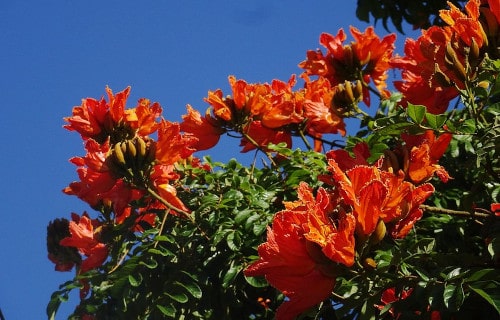
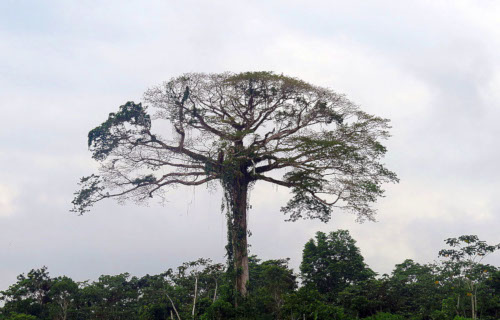
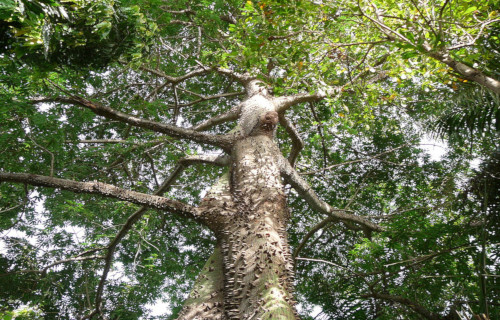
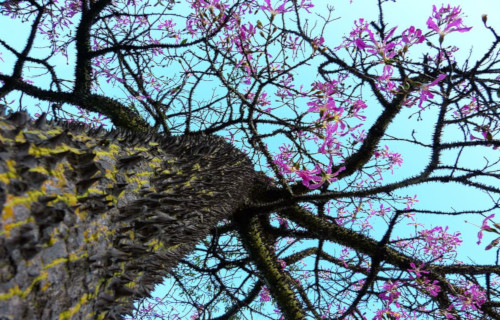
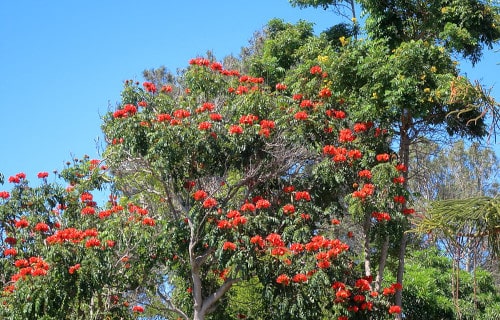
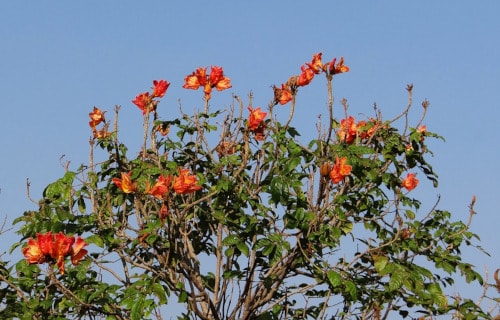
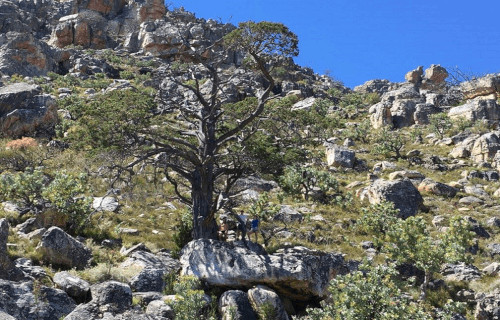
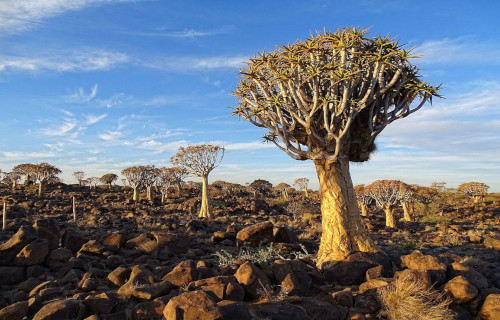
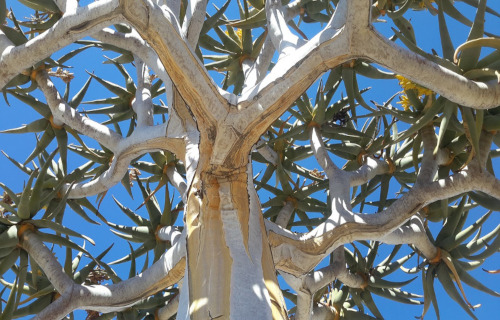
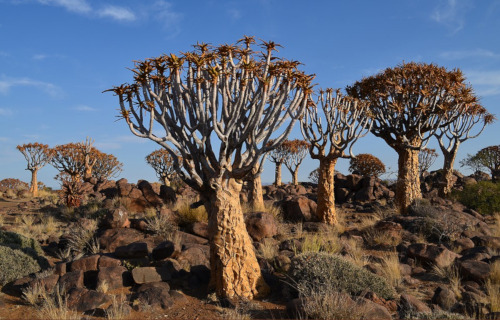









Leave a Reply